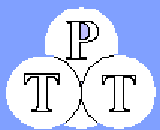
| Spis treści |
Biuletyn
Polskiego Towarzystwa Tribologicznego
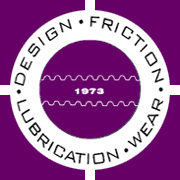
Member of the International Tribology Council

Publikacja dofinasowana przez Komitet Badań Naukowych
 |
Biuletyn
|
Szanowni Koledzy
Każda Organizacja w tym i PTT, aby mogła funkcjonować musi mieć zebrane składki od swoich członków. W naszej działalności zaniedbaliśmy trochę ten problem i z tego tytułu mieliśmy na końcu ubiegłego roku trudności w wypłaceniu niektórych należności.
Nasz adres:
Serdecznie Wszystkich Naszych Członków pozdrawiam. Stanisław PYTKO-prezes |
VI Konferencja
PROBLEMY NIEKONWENCJONALNYCH UKŁADÓW ŁOŻYSKOWYCH
MIEJSCE I TERMIN KONFERENCJI
Konferencja odbędzie się w Niedzicy, w dniach 16-19 września 2003r.
TEMATYKA KONFERENCJI
KORESPONDENCJE:
15.02.2003 Termin nadsyłania zgłoszenia wstępnego i streszczenia referatów (maksymalnie jedna strona formatu A4). Adres e-mail.
28.02.2003 Drugi komunikat powiadamiający o przyjęciu referatu, wytyczne do opracowania referatu.
23.05.2003 Termin nadsyłania pełnego tekstu referatu. Referaty mogą być napisane w języku polskim lub angielskim. W przypadku opracowania tekstu w języku angielskim niezbędne jest dołączenie obszernego streszczenia w języku polskim. Referaty opracowane w języku polskim powinny zawierać streszczenia w języku angielskim i rosyjskim. Przewiduje się drukowanie nadesłanych referatów w Materiałach Konferencyjnych, Tribologii, Zeszytach Naukowych Politechniki Łódzkiej i kwartalniku ZEM.
20.06.2003 Ostateczny termin nadsyłania poprawionego tekstu referatu.
16.09.2003 XXVI Szkoła Tribologiczna
OPŁATY:
Koszt uczestnictwa wynosi:
wpłata do 17 maja
- 1100 zł. - pełny koszt uczestnictwa
- 900 zł. - koszt uczestnictwa dla studentów i emerytowanych pracowników naukowo-dydaktycznych
wpłata po 17 maja
- 1300 zł. - pełny koszt uczestnictwa
- 1000 zł. - koszt uczestnictwa dla studentów i emerytowanych pracowników naukowo-dydaktycznych
20.06.2003 Nieprzekraczalny termin nadsyłania opłat za uczestnictwo w konferencji.
ADRES BIURA KOMITETU ORGANIZACYJNEGO
Zakład Geometrii Wykreślnej i Rysunku Technicznego
Instytutu Konstrukcji Maszyn Politechniki Łódzkiej
ul. B. Stefanowskiego 1/15
90-924 Łódź
tel. (042) 631 22 49
fax (042) 631 22 52
e-mail: zgwirt@mail.p.lodz.pl
Komitet Honorowy Konferencji:
Komitet Organizacyjny Konferencji:
Komitet Naukowy Konferencji:
Applied Scanning Probe Methods
Bharat Bhushan, Ohio State University, Columbus, Ohio, USA;
Harald Fuchs, University of Muenster, Germany;
Sumio Hosaka, Gunma University, Japan (Eds.) 2003. Approx. 460 p. 280 illus;. some of them in color.
(NanoScience and Technology)
Hardcover. EUR 129.95; L 91.00; sFr 210.-*
ISBN 3-540-00527-7
Date of publication:
October 2003
Bhushan, B. (Eds):
Appl. Scan. Probe Meth.
(NanoScience a. Technology)
ISBN3-540-00527-7
*EUR 129.95; l 91.00; sFr 210.-
Number: Valid Until:
Springer
Customer Service
Haberstr. 7
69126 Heidelberg
Germany
Fax: +49 (0)6221 / 345 4229
E-mail: orders@springer.de
*All EUR and GBP prices are net prices subject to local VAT: e.g., in Germany &% VAT. All prices exclusive of carriage charges. Prices and other details are subject to change without notice. All errors and omissions excepted. Printed in Germany.
Informacje elektroniczne z wydawnictw
9 copies remain of the Book of Abstracts for the 14th US National Congress of Theoretical and Applied Mechanics that was held in Blacksburg, VA, June 2002. To buy one, please send a check for U.S. $95.00, made payable to Virginia Tech Treasurer to:
For overseas orders, please add $25.00 for airmail delievery.
|
2-2003 TRIBOLOGIA Xingguo FU*, Yinong LIU*, Wenzhao YAO* *PetroChina Lanzhou Lubricating Oil Research & Development Institute, Lanzhou 730060, Gansu Province, China. THE EFFECT OF AGING PROCESS ON THE FORMATION OF CARBONATE PARTICLES DURING PREPARATION OF OVERBASED CALCIUM ALKYLSALICYLATES WPŁYW PROCESU STARZENIA NA POWSTAWANIE CZĄSTEK WĘGLANOWYCH PODCZAS OTRZYMYWANIA ALKILOSALICYLANU WAPNIA Z REZERWĄ ALKALICZNĄ
Key-words:
aging process, carbonate particle, overbased calcium alkylsalicylate
Streszczenie
2-2003 TRIBOLOGIA Jarosław GROBELNY*, Grzegorz CELICHOWSKI**, M. CICHOMSKI**, Krzysztof KORALEWSKI**, Ireneusz PIWOŃSKI**
* University of Lodz, Department of Solid State Physics, 149/153 Pomorska St., 90-236 Lodz, Poland. FRICTION FORCE MICROSCOPY STUDY OF POROUS METHYLSILICA THIN FILMS BADANIE CIENKICH, POROWATYCH WARSTW METYLO-KRZEMIONKOWYCH ZA POMOCĄ MIKROSKOPU SIŁ TARCIA
Key-words:
Atomic Force Microscopy, Friction Force Microscopy, surface topography, surface modification, porous materials Summary Streszczenie
2-2003 TRIBOLOGIA Ken'ichi HIRATSUKA*, Makoto YOSHIDA**
* Dept. Precision Engineering, Chiba Institute of Technology 2-17-1, Tsudanuma, Narashino-shi, Chiba 275-8588 JAPAN.
REDUKCJA DWUTLENKU WĘGLA PODCZAS TARCIA METALI Key-words: tribology, friction, wear, catalysis, carbon dioxide, tribo-catalysis Słowa kluczowe: tribologia, tarcie, zużycie, kataliza, dwutlenek węgla, tribokataliza Summary Streszczenie
2-2003 TRIBOLOGIA Andrzej KULCZYCKI*, Czesław KAJDAS**
* Centralne Laboratorium Naftowe, al. Żwirki i Wigury 31, 02-091 Warszawa. INFLUENCE OF SURFACE COARSENESS ON TRIBOCHEMISTRY OF AW/EP LAYERS PRODUCED BY GEAR OILS WPŁYW CHROPOWATOŚCI POWIERZCHNI NA TRIBOCHEMIĘ WARSTWY AW/EP, WYTWARZANEJ PRZEZ OLEJE PRZEKŁADNIOWE
Key-words:
wear, boundary layer, gear oil, coarseness, additives Summary Streszczenie
2-2003 TRIBOLOGIA Leszek MARGIELEWSKI*, Renata STANECKA*, Krzysztof KORALEWSKI* * University of Lodz, Department of the Chemical Technology and Environmental Protection, Lodz, Poland. EFFECT OF HIGH TEMPERATURE AND LOAD ON ANTIWEAR EFFECTIVENESS OF ZINC DIALKYLDITHIOPHOSPHATE IN LUBRICATION OF PARTIALLY STABILIZED ZIRCONIA WPŁYW TEMPERATURY I OBCIĄŻENIA NA SKUTECZNOŚĆ PRZECIWZUŻYCIOWĄ DIALKILODITIOFOSFORANU CYNKU W SMAROWANIU CZĘŚCIOWO STABILIZOWANEGO DWUTLENKU CYRKONU
Key-words:
antiwear properties, lubricant, zinc dialkyldithiophosphate additives, ceramic materials Summary Streszczenie
2-2003 TRIBOLOGIA Zenon PAWLAK* * Utah State Health Department, Environmental and Toxicology, 46 Medical Drive, Salt Lake City, UT 84113, USA; and University of Technology and Agriculture, Faculty of Chemical Technology and Engineering, Seminaryjna 3, Bydgoszcz, Poland. e-mail: zpawlak@.utah.gov. MICELLAR STRUCTURE OF LUBRICATING OILS MICELARNA STRUKTURA OLEJÓW SMAROWYCH
Key-words:
additives, soft-core and hard-core reverse micelles, interactions, solubiliztion, tribochemical antiwear surface film formation, acid-base processes Summary Streszczenie
2-2003 TRIBOLOGIA Yu.M. PLESKACHEVSKY*, A.L. ZAITSEV*, V.P. KIRILENKO*
PHYSICO-CHEMISTRY OF PHENOLIC RESINS WEAR AT SLIDING FRICTION IN WATER-GLYCOL SOLUTIONS FIZYKOCHEMIA ZUŻYCIA ŻYWIC FENOLOWYCH PODCZAS TARCIA ŚLIZGOWEGO W ROZTWORACH WODNO-GLIKOLOWYCH
Key-words:
phenolics, water-glycol complexes, physico-chemical processes, mechanisms of wear Summary Streszczenie
2-2003 TRIBOLOGIA Marian Włodzimierz SUŁEK*, Anita BOCHO-JANISZEWSKA* *Faculty of Material Engineering, Technical University of Radom, Chrobrego 27, 26-600 Radom, Poland. INFLUENCE OF ORGANIC COMPLEXES OF METALS ON MOTION RESISTANCE AND WEAR WPŁYW ORGANICZNYCH KOMPLEKSÓW METALI NA OPORY RUCHU I ZUŻYCIE
Key-words:
friction, wear, friction coefficient, organic complexes of metals, lubricant additives, grease Summary Streszczenie
2-2003 TRIBOLOGIA Huidong WANG*, ** Zhiqun HAN*, Renan WANG**, Yonglian ZHANG*, Suoqi ZHAO**
* Petrochina Lanzhou Lubricating Oil Research & Development Institute, Lanzhou 730060, Gansu Province, China. THE RESEARCH ON THE REACTION PROCESS OF THE SEDIMENTS IN HYDROTREATED LUBE BASE OILS UNDER ULTRAVIOLET RADIATION CONDITIONS BADANIA NAD REAKCJAMI OSADÓW W BAZOWYCH OLEJACH SMAROWYCH HYDRORAFINOWANYCH POD WPŁYWEM PROMIENIOWANIA ULTRAFIOLETOWEGO
Key-words:
hydrotreated base oils, ultraviolet radiation, sediment Summary Streszczenie
2-2003 TRIBOLOGIA Tomasz WASILEWSKI*, Włodzimierz SUŁEK* * Faculty of Material Engineering, Technical Univesrity of Radom, Chrobrego 27, 26-600 Radom, Poland. APPLICATION OF MIXTURES OF SORBITAN MONOLAURATE/ETHOXYLATED SORBITAN MONOLAURATE AS LUBRICANT COMPONENTS ZASTOSOWANIE MIESZANIN MONOLAURYNIAN SORBITANU/OKSYETYLENOWANY MONOLAURYNIAN SORBITANU JAKO SKAŁADNIKÓW KOMPOZYCJI SMAROWYCH
Key-words:
lyotropic liquid crystals, sorbitan esters, lubricant additives, friction coefficient, wear Summary Streszczenie
2-2003 TRIBOLOGIA A. PAUSCHITZ*, Manish ROY*, F. FRANEK* * Austrian Centre of Competence for Tribology Viktor Kaplan-Straße 2 A 2700 Wiener Neustadt, Austria. ON THE CHEMICAL COMPOSITION OF THE LAYERS FORMED DURING SLIDING OF METALLIC ALLOYS AT HIGH TEMPERATURE STRUKTURA CHEMICZNA WARSTEWEK TWORZONYCH W CZASIE TARCIA STOPÓW METALI W WYSOKIEJ TEMPERATURZE Key-words: chemical composition of layers, sliding, metallic alloys, high temperature Słowa kluczowe: struktura chemiczna warstewek, tarcie, stopy metali, wysoka temperatura Summary Streszczenie
2-2003 TRIBOLOGIA Michał CICHOMSKI*, Leszek MARGIELEWSKI*, Ewa BARYLSKA*, Ireneusz PIWOŃSKI* * University of Lodz; Department of Chemical Technology and Environmental Protection 163, Pomorska St, 90-236 Lodz, Poland; tel (+48 42) 635 58 32; fax (+48 42) 678 70 87; e-mail: splaza@uni.lodz.pl INVESTIGATION OF NANOSTRUCTURE ORDERING AND NANOFRICTIONAL PROPERTIES OF O,O,S-METHYL POLYETHOXYGLYCOL TRIESTER OF DITHIOPHOSPHORIC ACID LAYER ON STAINLESS STEEL AND ON GOLD BADANIA UPORZĄDKOWANIA NANOSTRUKTURY I WŁAŚCIWOŚCI NANOTARCIOWYCH WARSTW O,O,S-METYLO- TRIESTRU POLIETOKSYGLIKOLU KWASU DITIOFOSFOROWEGO NA STALI I NA ZŁOCIE
Key-words:
AFM, STM, nanofriction, nanostructure, self assembled monolayers, O,O,S-methyl polyethoxyglycol triester of dithiophosphoric acid, micelle Summary Streszczenie
2-2003 TRIBOLOGIA Krzysztof CHROBAK*, Jarosław GROBELNY*, Michał CICHOMSKI*, Ireneusz PIWOŃSKI* * University of Lodz, Department of Chemical Technology and Environmental Protection 163, Pomorska St., 90-236 Lodz, Poland tel (+48 42) 635 58 32; fax (+48 42) 678 70 87; e-mail: irek@uni.lodz.pl INVESTIGATION OF LB MONOLAYERS OF ARACHIDIC ACID WITH THE USE OF ATOMIC FORCE MICROSCOPY BADANIE MONOWARSTW LB KWASU ARACHIDOWEGO Z UŻYCIEM SIŁ ATOMOWYCH Key-words: AFM, arachidic acid, monolayer, LB film, friction Słowa kluczowe: AFM, kwas arachidowy, monowarstwa, warstwa LB, tarcie Summary Streszczenie
|
| Konferencje Bieżące | |||||||||||||||||||||||||||||||||||||||||
March 2003
 Hydraulik flüssigkeiten
Hydraulik flüssigkeiten
Die Leitung:
Das Thema:
Eigenschaften, Normung und Prüfung, Anwendung
Die Leitung: Der Termin: Veranstaltung : Nr. 28817/68.614
Hydraulikflüssigkeiten Schwerpunkt dieses Lehrgangs sind Hydraulikmedien für Anlagen, die nach dem hydrostatischen Prinzip arbeiten.
Praktiker und Wissenschaftler stellen in kurzen Referaten den Stand der Technik dar. Während des Lehrgangs steht ausreichend Zeit für die Diskussion spezieller Probleme und praktischer Beispiele mit den Dozenten zur Verfügung. Der Teilnehmerkreis: Konstrukteure, Betriebsingenieure und andere Betreiber von Hydraulikaniagen, die mit der Gestaltung sowie der Überwachung und Instandhaltung der Aniagen befasst sind, aus dem allgemeinen Maschinenbau, Aniagenbau und Bergbau, für Werkzeugmaschinen, Förderanlagen, Fahrzeuge und Baumaschinen, Mitarbeiter aus Entwicklung und Technischem Dienst der Mineralölindustrie Die Dozenten:
Dienstag, 11. Marz 2003 1. Einführung in die hydraulische Leistungsübertragung (W. J. Bartz) 2. Mineralölbasische Hydraulikflüssigkeiten - Aufbau, Eigenschaften und Normung (W. J. Bartz) 3. Biologisch schnell abbaubare Hydraulikflüssigkeiten (W. J. Bartz) 4. Anwendung und Überwachung mineralölbasischer Hydraulikflüssigkeiten in der Praxis (H. Heinemann) 5. Filtration von Hydraulikflüssigkeiten (H. KarI) 6. Gase in Hydraulikölen (D. Staeck) 7 Bauformen von Hydraulikdichtungen (E. Freitag)
Mittwoch, 12. Marz 2003 8. Wechselbeziehungen von konventionellen und biologisch abbaubaren Hydraulik-DrückfIussigkeiten mit elastomeren Dichtungswerkstoffen (G. Peschk) 9. Nichtwassnge schwer entflammbare Hydraulik flüssigkeiten (W. D. Phillips) 10. Wasserhaltige Hydraulikflüssigkeiten - Anforderungen und Eigenschaften (G. Hertel, U. Schmitz) 11. Schwer entflammbare Hydraulikflüssigkeiten in Industrie, Bauwesen und Bergbau (W. Bock) 12. Wasserhydrauliken (J. Reichel) 13. Prüfung von Hydraulikflüssigkeiten (J. Reichel)
Donnerstag, 13. Marz 2003 14. Uberwachung von Hydraulikflüssigkeiten (C. Seyfert) 15. Ölanałysen zur Früherkennung von Hydraulikausfällen und zur Schadensanałyse (R. Krethe) Trendanalyse zur Beobachtung des Maschinenzustandes - Ermittlung des optimalen Olwechselinten/alls - Probeentnahme: wann, wo, wie? - Testverfahren und ihre Aussagekraft - Ölanalysen und Korrekturrnaßnahmen - Typische Praxisbeispiele 16. Allgemeine Mikrobiologie wasserbasischer Arbeitsflüssigkeiten (R. G. Weyandt) Mikroorganismen - Mikrobielle Materialzerstörung - Nachweistechniken - Biozidwirksamkeit - Adaptation/Resistenzbildung - Prüfverfahren 17. Hygienische Aspekte von wasserbasischen Arbeitsfluiden (R. G. Weyandt) Die Telinahmegebühr:
€ 960,00 (mehrwertsteuerfrei) So melden Sie sich an:
mit den Angaben:
Hinweise zur Anreise erhalten Sie mit der Anmeldebestatigung. Mit der Anmeldung erkennen Sie unsere Geschaftsbedingungen an - insbesondere hinsichtiich der Stornierungs- und Zahiungsmodalitäten. Uber die vollständigen Geschäftsbedingungen (die wir Ihnen auch gerne zusenden) informiert Sie unser Gesamtprogramm. Außerdem können Sie sie in Ihrer Anmeldebestätigung nachlesen. Brauchen Sie ein Hotelzimmer?
Marianne Merten Haben Sie weitere Fragen zum Lehrgang?
Prof. Dr.-Ing. Wilfried J. Bartz
Weiterbildungsprogramme Tribologie (TAE) Die Technische Akademie Esslingen bietet zwei Weiterbildungsprogramme Tribologie (TAE) an, die sich jeweils über zwei Jahre erstrecken:
Tribologie (TAE) -1
Tribologie (TAE) - 2
Nähere Informationen enthält unsere detaillierte Ubersicht
Das Oualitatsmanagementsystem der Technischen Akademie Esslingen ist nach DIN EN ISO 9001 zertifiziert.
 14th INTERNATIONAL CONFERENCE ON WEAR OF MATERIALS (WOM-14)
14th INTERNATIONAL CONFERENCE ON WEAR OF MATERIALS (WOM-14)
www.elsevier.com/locate/wom
or contact:
Tel: +44 (0) 1865 843691
April 2003 ADDITIVES 2003
ADDITIVES 2003Meeting Customer Needs An international conference on additives for automotive fuels and lubricants: their chemistry, mode of action and tribological performance
1st - 3rd April 2003 Organised by the Royal Society of Chemistry Industrial Inorganic Chemicals and the Institution of Mechanical Engineers Tribology Group. This meeting will focus on:
Programme
Training Day
For further information please contact:
To receive free RSC news by email, register online at:
February 28, 2003 registration to the Conference and reservation of the accommodation in the mansion of the PASc in Vienna March 20, 2003 delivery of the one-page abstract of the presentation
für Tribologie
TRIBOLOGY:Science and ApplicationsReview Conference on scientific cooperation betweenAustria, Poland and their world-wide partners especially from Middle-European Countries
April 23 - 27, 2003
FIRST ANNOUNCEMENT
FOR INDIVIDUAL PARTICIPANTS I would like to participate in the Conference "Tribology: Science and Application", organized in Vienna from 23 till 27 of April 2003: Please type or print in CAPITAL LETTERS (English only): Title (Prof. Dr. Mr. Ms.), Family Name, First Name Affiliation, Street, City, Postal Code, Country: Tel. (including country and area code), Fax, E-mail:
Number
1
Double 2-5
Single
Double
Your reservation will be accepted according to the rule:
Tel.: (+43-1)-713-5929-305, (+43-1)-713-0383-305
Co-organizers of the conference:
Venue of the conference:
Mansion of the Polish Academy of Sciences
The aim and scope of the Review ConferenceThe Conference "TRIBOLOGY: Science and Applications", is devoted to reviewing the current scientific results achieved so far in all of the already realized cooperation projects as well as to the presentation of new offers for mutual Austrian-Polish and Polish-other Middle-European Countries cooperation in the future. It should also summarise the most valuable achievements gained in the preceding years 2001 and 2002 by the cooperating partners from the mentioned countries.
Presentation forms
Only the following oral presentations will be accepted for the conference program:
The subject (title, co-authors and contents) of each presentation should be earlier specified in the form of a short, one- page abstract in English, which should be sent to the organizer of the Conference not later than on March 20, 2003.
The whole text of the presentation The conference proceedings volume will be published by the Publishing House (CUN) of the Polish Academy of Sciences in Warsaw at the beginning of the year 2004.
Deadlines |
| Preliminary Programm: | |
| 23.04. | Welcome Session: Tribotesting, Triboemission, Tribosurface Analysis, Tribochemistry |
| 24.04. | Morning:Visit to the ARCS, Seibersdorf Afternoon sessions: Centre of Competence for Tribology, Wiener Neustadt Lubricated Friction & Wear and Diesel Fuel Lubricity |
| 25.04. - 26.04 | Symposium: Tribology in Vacuum Tribomechanically Stimulated Outgassing of Metals in UHV, Wear and Catalysis in UHV, Vacuum Triboemission |
| 27.04. | Closing Session: Summarizing Presentations |
 |
19:00 Opening Session
19:00 Welcome addresses
19:30 Inauguration presentation:
20:15 Concert: The Vienna Music
21:00 Get-together Party in the Knight`s room
9:00 Bus departure for Seibersdorf
10:00 Visit to the Austrian Research Center Seibersdorf
10:15 Invited presentation 1:
10:45 Visits to the research laboratories of ARCS
12:00 Lunch break
13:00 Bus departure for Wiener Neustadt
13:30 Visit to the Austrian Center of Competence
14:00 Conference Session 1: Lubricated Friction and Wear
14:30 Invited presentation 3:
15:00 Invited presentation 4:
15:00 Coffee break
16:00 Conference Session 2: Diesel Fuel Lubricity
16:30 Contributed presentation 1:
16:50 Contributed presentation 2:
17:10 Contributed presentation 3:
17:30 Coffee break
18:10 Conference Session 3: Measurement Techniques
18:30 Invited presentation 7:
19:00 Contributed presentation 4 :
19:20 Contributed presentation 5:
19:40 Adjourn
20:00 Conference banquet in Wiener Neustadt
22:00 Bus departure for Vienna
9:00 Welcome address
9:15 Symposium Session S1: Wear, chemical reactions, and outgassing
9:45 Invited presentation S2 :
10:15 Invited presentation S3:
10:45 Coffee break
11:15 Symposium Session S2: Triboemission and catalysis
11:45 Invited presentation S5:
12:15 Invited presentation S6:
12:45 Contributed presentation CS1:
13:05
14:15 Bus departure from the PASc. mansion
18:00 Symposium Session S3: Tribology in vacuum
18:20 Contributed presentation CS3:
18:40 Contributed presentation CS4:
19:00 Contributed presentation CS5:
19:20 Coffee break
19:40 Symposium Session S4: Miscellanea
20:00 Contributed presentation CS7:
20:20 Contributed presentation CS8:
20:40 Invited presentation S7 :
21:10 Closing address
21:30 Adjourn
10:00 Conference Session 4: Surface Physics
10:15 Invited presentation 8:
10:45 Contributed presentation 6:
11:05 Contributed presentation 7:
11:25 Contributed presentation 8:
11:45 Contributed presentation 9:
12:05 Adjourn
12:15 Visits to the laboratories of the Vienna University of Technology
13:00 Lunch break, and free time for Vienna sightseeing
19:00 Conference Session 5: Bearing Systems
19:20 Contributed presentation 11:
19:40 Contributed presentation 12:
20:00 Contributed presentation 13:
20:20 Adjourn
10:00 Conference Session 6: Miscellanea
10:30 Contributed presentation 14:
10:50 Contributed presentation 15:
11:10 Contributed presentation 16 :
11:30 Contributed presentation 17:
11:50 Contributed presentation 18:
12:10 Coffee break
12:30 Closing Session
12:45 Summarizing presentation
13:15 Closing address
13:30 Adjourn
The Society of Tribologists & Lubrication Engineers (STLE) will hold its 58th Annual Meeting & Exhibit program on April 28 - May 1, 2003, in New York City at the Hilton New York hotel. Nearly 1,500 technical professionals from around the world are expected to attend.
The conference program will feature more than 250 presentations in 48 sessions devoted to state-of-the-art research and industry practice, with presenters from academia, government and industry.
The New York meeting is also an opportunity for people to enhance their professional credentials through nine different technical education courses, or by sitting for one of STLE's two professional certification exams - Certified Lubrication Specialist (CLS) or Oil Monitoring Analyst (OMA).
An expanded exhibit program will feature more than 85 companies and organizations presenting the latest in products and services for the lubrication professional.
Information and registration materials for the 2003 Annual Meeting and Exhibition will be mailed in January to STLE members, past attendees, and interested parties. To request registration materials or more information, visit the STLE website at STLE
| TRIMIS 2003 |
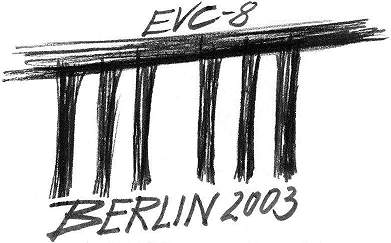 8th EUROPEAN VACUUM CONFERENCE (EVC-8)
8th EUROPEAN VACUUM CONFERENCE (EVC-8)
Tutorial/Workshop
Please contact the Tutorial/Workshop Chair for the proposals by November 29, 2002.
We look forward to meeting you in Kobe next year !
Best Regards,
Shigeki Sugano, General Chair
aim2003@sugano.mech.waseda.ac.jp
Hideki Hashimoto, Program Chair
aim2003pc@sugano.mech.waseda.ac.jp
TRIBOLOGICAL FAILURE MECHANISMS IN REPEATED ROLLING CONTACTS
Speakers will include:
Prof. K L Johnson (University of Cambridge); Prof. M Ciavarella (Politecnico di Bari); Dr A Kapoor (University of Sheffield); Prof. L Josefson (Chalmers University); Dr C Davis (University of Birmingham); Dr H P Evans (University of Cardiff); Dr E J Myers (University of Newcastle); Dr A Olver (Imperial College); Mr A Lee (Torotrack).
Workshop for invited participants: 9.30-12.30 Wednesday 23rd July.
Those above plus, Fujii (NTN Bearings); Morales-Espejel (SKF); Loughton (Railway Safety Ltd); Ventry (AEAT Rail); Sawley/Dembosky (TTCI).
For further information please contact:
John Williams/Margaret Stack
 The 5th Euromech fluid conference 24-28 august 2003
The 5th Euromech fluid conference 24-28 august 2003
The objective of the society is to engage in all activities intended to promote in Europe the development of mechanics as a branch of science and engineering. Mechanics deals with motion, flow and deformation of matter, be it fluid or solid, under the action of applied forces, and with any associated phenomena.
The next European Fluid Mechanics Conference will be held in Toulouse (France) from August 24 to August 28, 2003. This conference, organised under the auspices of EUROMECH by the Institut de Mécanique des Fluides de Toulouse, will be the fifth in the series started in Cambridge in 1991 and continued in Warsaw (1994), Göttingen (1997) and Eindhoven (2000). The conference will cover the whole field of Fluid Dynamics, ranging from very fundamental aspects to recent applications. This conference will provide a unique opportunity for fluid dynamicists to see what is going on in this very active field in Europe and to exchange their views on recent developments. The conference will comprise invited lectures, oral presentations, poster sessions, and three mini-symposia dealing with selected topics. Selection of papers will be made on the basis of a one-page abstract. Following the general policy of EUROMECH Conferences, no proceedings will be published.
All correspondence can be directed to the EFMC2003 Conference Office.
Electronic registration and electronic submission of abstracts are strongly encouraged.
The use of fax and classic mail is restricted to persons for whom electronic means are not available.
Hotel accommodation has to be arranged by the attendees themselves. To help them, a list of hotels with rates and addresses is available at the hotel page. Note that rooms have been pre-booked until June 30, 2003.
November 1, 2002: Registration possible on the Web site.
December 10, 2002: Deadline for abstracts submission (1 page). Texts must follow the guidelines sent out and given on the Web site. The authors must also specify preference for an oral or a poster presentation.
January 10, 2003: Deadline for application for young researchers' fellowships.
March 1, 2003: Notification of acceptance (oral or poster). Preliminary programme is drawn up and made available on the Web site.
April 1, 2003: Notification of acceptance of fellowships for young researchers.
May 1, 2003: Deadline for registration at a reduced fee. Registration deadline for authors of oral presentations. Final programme available on the Web site.
June 30, 2003: Deadline for payment at a reduced fee and for the reservation of pre-booked hotel rooms.
The two Euromech Young Scientist Prizes 2003 will be attributed at the end of the Conference. These prizes, 500 euro each, will reward the best oral and poster presentations given during EFMC2003 by scientists less than 35 years old at the time of the conference. To apply to these prizes, young contributors must send an electronic mail to the EFMC2003 Conference Office (efmc2003@imft.fr) before December 10, 2002. This e-mail must specify the date of birth of the applicant, his or her address and the title and number of his or her abstract. Note that applicants must be the presenting author of their contribution (oral or poster).
Paticipants less than 35 years old at the time of the conference may apply for a partial financial support. To this end, after having submitted their abstract, they have to send a short vitae, a motivation letter and a copy of their abstract (all three in PdF format) to the e-mail address: fyrefmc@imft.fr.This package must be sent not later than January 10, 2003. The possibility for a financial support will be examined only for those of the applicants whose abstract will have been accepted by the Euromech Fluid Mechanics Conference Committee. The decision will be notified by electronic mail, not later than April 1, 2003.
The conference will be held at the Centre des Congres Pierre Baudis
11 esplanade Compans Caffarelli
31000 Toulouse
The city of Toulouse has an international airport. There are also frequent trains running to Toulouse from the main French cities (facilities and access maps).
You can find in the link hereafter general information about Toulouse including urban transport :
www.mairie-toulouse.fr
Invited Lectures
Three types of presentations will be accepted: Regular lectures, Posters and Mini-symposia.
Mini-symposia will consist of oral presentations on the following topics:
August 25: Welcome ceremony at the Capitole (City-Hall of Toulouse).
August 26 afternoon: Visit of the city of Albi, historical and artistic capital of the Albigeois, with its famous Cathedrale Sainte-Cécile and the Museum Toulouse-Lautrec. Albi Tourist Office.
August 26 evening: Banquet: an opportunity to enjoy the tasty world famous cuisine of southwest France, in the Chateau de Croisillat.
For accompanying persons:
August 25 afternoon: Visit of Toulouse (guided walk in the historical centre of the city) Toulouse Tourist Office.
The central theme of this conference is to highlight the transient aspects of the processes in tribology and to point out the differences obtained with the stationary conditions, be it experimental, analytical or numerical.
Papers are therefore invited from the fields of mechanics, material science and physico-chemistry that focus on the transient aspect of a particular phenomenon in friction, lubrication and wear.
Topics include:
Vibration, noise and tribological contacts
Operating conditions including acceleration/deceleration/impacts
Transient effects on material properties (for example lubricant rheology)
Reaction times of additives, third bodies
Different time scales of processes in tribology
Laboratoire de Mecanique des Contacts
UMR CNRS INSA 5514
Batiment J. d'Alembert
INSA de Lyon
20 Avenue Albert Einstein
69621 Villeurbanne cedex, France
Tel: ++33 (0) 4 7243 8452
Fax: ++33 (0) 4 7889 0980
email: lmc@insa-lyon.fr
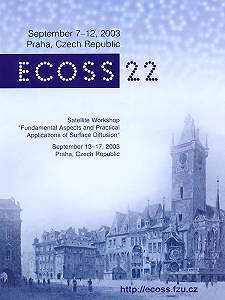 22th EUROPEAN CONFERENCE ON SURFACE SCIENCE (ECOSS-22)
22th EUROPEAN CONFERENCE ON SURFACE SCIENCE (ECOSS-22)
Scope of the Workshop:
· microscopic approaches
· large-scale modeling of surface diffusion
· clusters and nanostructures
· growth of nanostructures
· sputtering and etching
· chemical reactions, catalysis
· diffusion in biological systems
· molecular assembly on surfaces
· Surface structure, morphology, roughness and topography
· Diffusion, dynamics and growth at surfaces
· Magnetic properties of low dimensional systems
· Magnetic interfaces
· Small particles, clusters and nanostructures
· Electronic structure of low dimensional systems
· Organic molecules on surfaces
· Adsorption, chemisorption and surface reactions
· Surface thermodynamics and phase transitions
· Nanotribology
· Heteroepitaxy and surface alloying
· Techniques: surface and interface microscopy and spectroscopy
The International Workshop on Surface Physics is intended to replace the International Seminar on Surface Physics that was organized by the Institute of Experimental Physics of the University of Wroclaw in the years 1976 - 2000. During the last few years it has become clear that the original formula of the Seminar, which was intended as a platform for exchange of ideas between the scientist from the "East" and "West", is exhausted.
We decided to switch the formula to a more typical workshop gathering surfacists, experimentalists and theoreticians, working on rapidly developing research field of surface science. The program of the Workshop is built around 10-12 invited talks presented by the world leader scientists. Certain number of contributed papers (10) will be selected for oral (20 min.) presentations and the other will be displayed as posters. Proceedings of the meeting will be published.
There will be ample time for discussion. Emphasis will be put on the creation of maximum opportunities for informal discussion and the facilitating of direct person-to-person exchanges of ideas about new developement. The idea is to encourage stronger contacts between the young scientists and the senior figures of various fields. There will be young scientists presentations.
The theme of the oncoming workshop will be:
Metals on Solid Surfaces
and will cover following topics:
· Surface topography
· Metallic nanostructures on surface
· Electronic structure and properties
· Interatomic interactions on surfaces
· Surface alloying and mixing
Up to date the following scientist have agreed to provide talks:
· Ernst Bauer (Tempe, USA)
· Harald Brune (Lausanne, Switzerland)
· Harald Ibach (Juelich, Germany)
· Mieczyslaw Jalochowski (Krakow, Poland)
· Bengt Lundqvist (Goeteborg, Sweden)
· Theodore Madey (Rutgers, USA)
· Vladimir Matolin (Prague, Czech Republic)
· Anton Naumovets (Kiev, Ukraine)
· Herbert Pfnuer (Hannover, Germany)
· Marek Szymonski (Cracow, Poland)
· Ugo Valbusa (Genova, Italy)
· Klaus Wandelt (Bonn, Germany)
The workshop is supposed to be a satellite meeting to the 22nd European Conference on Surface Science to be held in Prague, 7 - 12 September 2003. The format of the Workshop will be limited to about 100 - 120 participants. The venue of the Workshop will be Polanica Zdroj a small spa town located midway between Wroclaw and Prague (some 160 km from Prague), on the Polish side of the border.
Organizers:
|
Prof. Antoni Ciszewski Institute of Experimental Physics University of Wroclaw plac M. Borna 9 50-204 Wroclaw Poland tel (+48 71) 3759310 fax (+48 71) 3287365 e-mail: ciszewsk@ifd.uni.wroc.pl |
Prof. Adam Kiejna Institute of Experimental Physics University of Wroclaw plac M. Borna 9 50-204 Wroclaw Poland tel (+48 71) 3759264 fax (+48 71) 3287365 e-mail: kiejna@ifd.uni.wroc.pl |
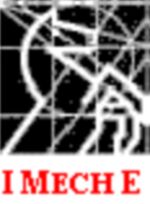 TRIBOLOGY IN ENVIRONMENTAL DESIGN 2003
TRIBOLOGY IN ENVIRONMENTAL DESIGN 2003
2nd International Conference
8th-10th September 2003
Bournemouth, UK
Sustainable Product Engineering of Bournemouth University Research Centre and the University of Oviedo in Spain at this conference will deal with the Characteristics of Interacting Surfaces; A Key Factor in Sustainable and Economic Products.
Objectives
The objectives are to highlight the issues of wear and friction between interacting surfaces in relative motion as well as the effect lubrication has on these interacting surfaces which are a prerequisite for product function, quality and cost. These characteristics have environmental as well as life cycle consequences which emphasise the importance their consideration has during the early stages of product design.
It is the purpose of this conference to draw together expertise in this multi-disciplinary field to assist in a better understanding of the issues relating to tribological characteristics so that they can be addressed early in the product design stage.
Conference Topics
Papers are invited on the topics listed below and other which fall within the general scope of the conference:
Exhibition Facilities
There will be exhibition facilities for the display of products, literature, etc. related to the theme of the conference.
The first conference on Tribology in Environmental Design took place in 2001 and was a very great success, with a large international participation.
For general information please visit website:
www.sustainableengineering.org/ted2003/ted2003.htm
For further information please contact
Ms. Deborah Newton-Perks
Conference Secretariat, TED2003
Bournemouth University, Studland House, 12 Christchurch Road, Bournemouth Dorset BH1 3NA, UK
Tel: 44 (0)1202 503750
Fax: 44 (0)1202 503751
Email: ted_info@bournemouth.ac.uk
 Materials & Processes for Medical Devices Conference
Materials & Processes for Medical Devices Conference
Sponsored by: ASM International, The Materials Information Society
Co-Sponsored by:
ASTM International Committee F04 on Medical and Surgical Materials and Devices
American Academy of Orthopaedic Surgeons
This event will focus on materials, processes and technology as they relate to medical/dental devices:
Papers are solicited for, but not limited to, the following areas:
Please seriously consider your ability to prepare a full manuscript and present your work at the conference BEFORE submitting your abstract. All costs associated with your participation are your responsibility (travel, housing, registration, etc.)
Interested authors should submit a 100-150 words abstract (in English) to www.asminternational.org/absubmit_meddevices.cfm; simply complete the requested presenter and co-author information: name, title, company/affiliation, complete address, phone and fax number and e-mail address.
You will be notified as to the acceptance of your abstract approximately the first week of March 2003.
PUBLICATION:
Conference proceedings will be published and distributed to all attendees following the event. Deadline for manuscript submissions will be AT the event and the book published by the end of the year.
Organizing Committee:
|
Dr. Sanjay Shrivastava, Event Chairman R&D Principal Engineer Edwards Lifesciences LLC Irvine, California |
Dr. Phillip J. Andersen Consultant Andersen Metallurgical LLC Madison, Wisconsin |
|
Dr. Stanley A. Brown Biomaterials Engineer USFDA Center for Devices and Radiological Health Div. of Mechanics & Materials Science Rockville, Maryland |
Dr. Sepehr Fariabi Senior Director Edwards Lifesciences LLC Irvine, California |
|
Dr. Farrokh Farzin-Nia Technical Director of Materials R&D Ormco Corporation Inglewood, California |
Dr. Darel E. Hodgson Chief Technology Officer Shape Memory Applications/Johnson Mathey Palo Alto, California |
|
Dr. Dana Medlin Principal Engineer Zimmer Incorporated Warsaw, Indiana |
Dr. Y. V. Murty, FASM Technology Assessment Carpenter Technology Corporation Reading, Pennsylvania |
|
Prof. Henry J. Rack, FASM Prof., Materials Science & Engineering Clemson University Clemson, South Carolina |
Dr. Ming H. Wu Vice President of Technology Memry Corporation Bethel, Connecticut |
Visit the ASM website frequently at www.asminternational.org/meddevices for updates on this event.
Questions? Contact us:
ASM International
Conference Administrator, Medical Devices Event
Materials Park, Ohio U.S.A. 44073-0002
Telephone: 440.338.5151
Fax: 440.338.4634
| YAROFRI 2003 |
Programme of the Symposium
Mr E G Piven
OAO TIIR
159948 Yaroslavl
Moskovsky Avenue, 149
Russia
Tel: +7 0852 44 1663
Fax: +7 0852 44 1591
Email: tiir@yaroslavl.ru
www.tiir.ru


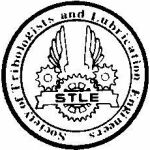 Smart Surfaces in Tribology: Advanced Additives and Structured Coatings
Smart Surfaces in Tribology: Advanced Additives and Structured Coatings
First Circular
A European conference on recent developments in additive technology and surface coatings for the reduction of wear and friction on moving surfaces
Smart Surfaces in Tribology:
Advanced Additives and Structured Coatings
This meeting is organised jointly between the Brussels section of the Society of Tribologists and Lubrication Engineers (STLE, Brussels Section), the Swiss Federal Laboratories for Materials Testing and Research (EMPA) and Tribology Letters (Kluwer Publishing). It is aimed at people from industry and academic institutions, who have a shared interest in recent developments in elucidating the mechanisms of additives in forming protective coatings, as well as the increasing use, by coating manufacturers, of highly structured approaches to improving wear resistance.
Oral Presentation:
Closing date for submission of abstract 28 February 2003
Poster Presentation:
Closing date for submission of abstract 31 March 2003
Papers submitted for oral or poster presentations may be submitted for publication in a special edition of Tribology Letters, subject to normal reviewing procedures.
Prof. Hugh Spikes (Imperial College, England):
The antiwear film-forming properties of zinc dialkyldithiophosphates
Dr Marcus Morstein (Platit AG, Switzerland):
Novel high-performance PVD coatings by nano- and microscale structuring
Dr Sandrine Bec (Ecole Centrale de Lyon, France):
Nanorheological properties of antiwear tribofilms
Dr Joerg Patscheider (EMPA, Switzerland):
Wear protection by nanostructured hard coatings
| Dr Rowena Crockett | EMPA, Switzerland |
| Prof. Nicholas Spencer | ETHZ, Switzerland and Tribology Letters |
| Ir Michel Roegiers | STLE, Belgium |
| Dr Lukas Rohr | EMPA, Switzerland |
| Mr Sigi Roos | EMPA, Switzerland |
| Prof. Hugh Spikes | Imperial College, England |
| Dr Paul Hug | EMPA, Switzerland |
| Dr Joerg Patscheider | EMPA, Switzerland |
Dr Rowena Crockett, EMPA
Phone: +41 1 823 46 12
Fax: +41 1 823 40 38
Email: rowena.crockett@empa.ch
STLE-ASME Joint Tribology Conference October 26-29, 2003, Jacksonyille, FL
To receive further information, please complete this form.
Tick boxes as appropriate
? Please send the second circular and application form
? l would like to present an oral paper
Closing date for submission of abstract: 28 February 2003
? l would like to present a poster
Closing date for submission of abstract: 31 March 2003
Provisional title for oral presentation or poster
? My company is interested in sponsoring this event
Please write in capitals or type
Name
MECHTRIBOTRANS – 2003
The Russian academy of sciences in association with the Ministry of Transport of the Russian Federation, The Ministry of Transport Communication of the Russian Federation, Interdisciplinary Scientific Tribology Council, Association of Tribology Engineers and Rostov State University of Transport Communication have the honor to invite you to participate in the international Congress "Mechanics and Tribology of Transport Systems". The Congress will be held in September 10-13, 2003 in Rostov-on-Don (Russia).
|
acad. RAS V.S. Avduevskii acad. RAS N.A. Anfimov acad. RAS V.A, Babeshko acad. RAS V.V. Bolotin acad. RAS R.F. Ganiev acad. RAS K. S. Kolesnikov acad. RAS A.B. Kurzhanskii acad. RAS V.M.Matrosov acad. RAS F.M. Mitenkov acad. RAS N.F. Morozov acad. RAS G.V. Novozhilov acad. RAS V.E. Panin acad. RAS V.M. Pashin acad. RAS V.G. Peshekhonov acad. RAS I.D. Spasskii acad. RAS M.N. Tishehenko acad. RAS O.N. Favorskii acad. RAS F.L. Chernousko acad. RAS G.G. Chorny acad. RAS A.G. Shipynov acad. RAS V.P. Shorin |
dr. R. Bassani (Italy) dr. W. Bartz (Germany) dr. A. Gerve (Germany) dr. F. Franek (Austria) dr. B. Jacobson (Sweden) dr. K.L. Johnson (Great Britain) dr. K. Holmberg (Finland) dr. K. Kato (Japan) dr. J. Larsen-Basse (USA) dr. T. Mathia (France) dr. J..P. Pascal (France) dr. S. Pytko (Poland) dr. W. Schiehien (Germany) dr.R.Vishnevetsky(USA) dr. Xie Uou Bai (China) |
|
cor. memb. RAS B.V. Gusev corr. memb. RAS V.G.Inozemcev corr. memb. RAS N.A. Mahoutov prof. N.A. Boushe prof. D.N. Garkunoy prof. Ju.N. Drozdov prof. V.J. ICershenbaum prof A.L. Lisitsyn prof. Ju.M. Louzhnov prof. N.K.. Myshkin prof. Ju.M. Pleskachevskii prof. V.K. Homeriki prof. A.V. Chichinadze |
prof. A.N. Guda prof. Jevdokimov prof. I.M. Elmanov prof. A.A. Zarifyan dr. P.G. Ivanochkin prof. I.A. Maiba dr. N.A. Myasnikova. dr. A.V. Okhotnikov dr. V.M. Prihodko dr. A.V. Chelokhyan prof. P.N. Shcherbak |
| XXVI Jesienna Szkoła Tribologiczna
VI |
VI Konferencja
PROBLEMY NIEKONWENCJONALNYCH UKŁADÓW ŁOŻYSKOWYCH
MIEJSCE I TERMIN KONFERENCJI
Konferencja odbędzie się w Niedzicy, w dniach 16-19 września 2003r.
TEMATYKA KONFERENCJI
KORESPONDENCJE:
15.02.2003 Termin nadsyłania zgłoszenia wstępnego i streszczenia referatów (maksymalnie jedna strona formatu A4). Adres e-mail.
28.02.2003 Drugi komunikat powiadamiający o przyjęciu referatu, wytyczne do opracowania referatu.
23.05.2003 Termin nadsyłania pełnego tekstu referatu. Referaty mogą być napisane w języku polskim lub angielskim. W przypadku opracowania tekstu w języku angielskim niezbędne jest dołączenie obszernego streszczenia w języku polskim. Referaty opracowane w języku polskim powinny zawierać streszczenia w języku angielskim i rosyjskim. Przewiduje się drukowanie nadesłanych referatów w Materiałach Konferencyjnych, Tribologii, Zeszytach Naukowych Politechniki Łódzkiej i kwartalniku ZEM.
20.06.2003 Ostateczny termin nadsyłania poprawionego tekstu referatu.
16.09.2003 XXVI Szkoła Tribologiczna
OPŁATY:
Koszt uczestnictwa wynosi:
wpłata do 17 maja
- 1100 zł. - pełny koszt uczestnictwa
- 900 zł. - koszt uczestnictwa dla studentów i emerytowanych pracowników naukowo-dydaktycznych
wpłata po 17 maja
- 1300 zł. - pełny koszt uczestnictwa
- 1000 zł. - koszt uczestnictwa dla studentów i emerytowanych pracowników naukowo-dydaktycznych
20.06.2003 Nieprzekraczalny termin nadsyłania opłat za uczestnictwo w konferencji.
ADRES BIURA KOMITETU ORGANIZACYJNEGO
Zakład Geometrii Wykreślnej i Rysunku Technicznego
Instytutu Konstrukcji Maszyn Politechniki Łódzkiej
ul. B. Stefanowskiego 1/15
90-924 Łódź
tel. (042) 631 22 49
fax (042) 631 22 52
e-mail: zgwirt@mail.p.lodz.pl
Komitet Honorowy Konferencji:
Komitet Organizacyjny Konferencji:
Komitet Naukowy Konferencji:
|
Przewodniczący - Jan Burcan - Politechnika Łódzka Tadeusz Burakowski - Instytut Mechaniki Precyzyjnej Czesław Cempel - Politechnika Poznańska Janusz Cwanek - AR Rzeszów Jan Czajgucki - Wyższa Szkoła Morska, Gdynia Ryszard Czarny - Politechnika Wrocławska Jan Dąbrowski - Politechnika Białostocka Antoni Dziama - Politechnika Wrocławska Monika Gierzyńska-Dolna - Politechnika Częstochowska Karol Grudziński - Politechnika Szczecińska Zdzisław Haś- Politechnika Łódzka Janusz Janecki - WITPiS Sulejówek Czesław Kajdas - Politechnika Warszawska Wiesław Kaniewski - Politechnika Łódzka Jan Kiciński - IMP PAN Mieczysław Korzyński - Politechnika Rzeszowska Czesław Koziarski - Politechnika Wrocławska Piotr Kula - Politechnika Łódzka Andrzej Kulczycki - Centralne Laboratorium Naftowe Stanisław Laber - Politechnika Zielonogórska Zbigniew Lawrowski - Politechnika Wrocławska Wiesław Leszek - Politechnika Poznańska Jerzy Łunarski - Politechnika Rzeszowska |
Ryszard Marczak - Politechnika Radomska Karol Nadolny - Politechnika Poznańska Antoni Neyman - Politechnika Gdańska Waldemar Oleksiuk - Politechnika Warszawska Olgierd Olszewski - Politechnika Gdańska Stanisław Płaza - Uniwersytet Łódzki Stanisław Pytko - AGH Kraków Andrzej Raczyński - Politechnika Łódzka Zygmunt Rymuza - Politechnika Warszawska Jan Sadowski - Politechnika Radomska Jan K. Senatorski - Instytut Mechaniki Precyzyjnej Jacek Stupnicki - Politechnika Warszawska Józef Szala - ATR Bydgoszcz Marian Szczerek - Instytut Technologii Eksploatacji Jerzy Szumniak - WITPiS Sulejówek Stanisław F. Ścieszka - Politechnika Śląska Włodzimierz Świderski - Politechnika Łódzka Włodzimierz Waligóra - Politechnika Poznańska Wojciech Wieleba - Politechnika Wrocławska Krzysztof Wierzcholski - Wyższa Szkoła Morska, Gdynia Marek Wiśniewski - Instytut Technologii Eksploatacji Bolesław Wojciechowicz - Politechnika Poznańska Wiesław Zwierzycki - Politechnika Poznańska |
 INTERNATIONAL CONFERENCE ON EROSIVE AND ABRASIVE WEAR (ICEAW-II)
INTERNATIONAL CONFERENCE ON EROSIVE AND ABRASIVE WEAR (ICEAW-II)
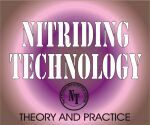 The 9th International Seminar IFHTSE NITRIDING TECHNOLOGY THEORY AND PRACTICE
The 9th International Seminar IFHTSE NITRIDING TECHNOLOGY THEORY AND PRACTICE
|
|
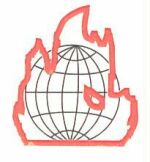 |
|
prof. A. Nakonieczny (Poland) - the Chairman prof. T. Bell (England} prof. L. Berkowski (Poland) prof. T. Burakowski (Poland) prof. L. Druga (Rumania) prof. D. Fan (China) prof. J. Flis (Poland) prof. M. Gantois (France) prof. S. Gerasimov (Russia) prof. J. Grosch (Germany) prof. Z. Haś (Poland) prof. M. Hetmańczyk (Poland) prof. L. Jeziorski (Poland) prof. J. Kaczmarek (Poland) prof. T. Karpiński (Poland) prof. G. Kodżaspirov ((Russia) prof. Z. Kolozsvary (Rumania) prof. M. Korwin (Canada) prof. P. Kula (Poland) prof. J. Kusiński (Poland) prof. C. Leroux (France) prof. A. Maciejny (Poland) prof. P. Mayr (Germany) |
prof. E. Mittemeijer (Germany) prof. K. Oczoś (Poland) prof. V. Pokhmurskii (Ukraine) prof. W. Precht (Poland) prof. W. Przetakiewicz (Poland) prof. Z. Rogalski (Poland) prof. E. Roliński (USA) prof. J. Senatorski (Poland) prof. O. Sirotkin (Russia) prof. D. Slovetsky (Russia) prof. B. Smouan (Croatia) prof. T. Sobusiak (Poland) prof. H. Spies (Germany) prof. J. Tacikowski (Poland) prof. W. Tilipalov (Russia) prof. G. Totten (USA) prof. S. Watanabe (Japan) prof. J. Tymowski (Canada) prof. T. Wierzchoń (Poland) prof. S. Wojciechowski (Poland) prof. R. Wooo (England) prof. M. Wysiecki (Poland) |
THE SEMINAR MATERIALS